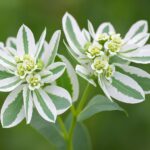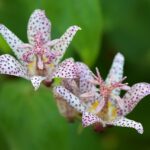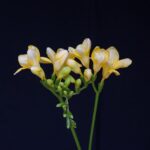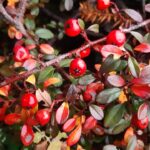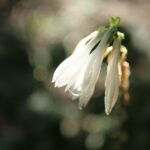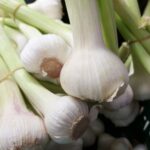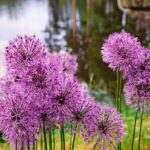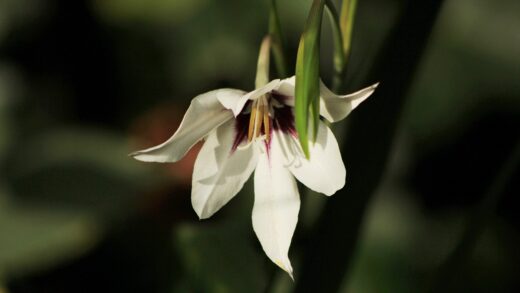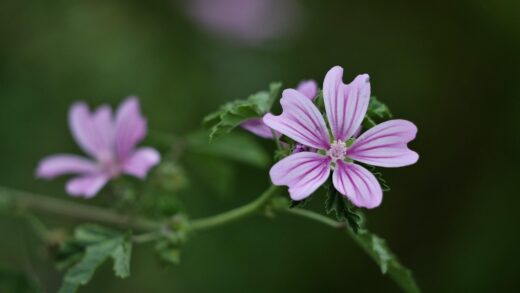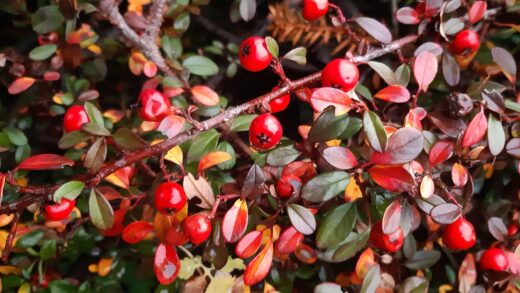The cornflower, this charming flower, most often with sky-blue petals, has been an inseparable part of the Hungarian landscape and grain fields for centuries. Originally known as an unassuming wild weed from the Mediterranean region, its grace and vibrant color quickly won its way into our hearts and gardens alike. Its value is not just aesthetic; the cornflower also plays an important role in folk medicine and is a cornerstone of wildflower gardens and insect-friendly habitats. In modern horticulture, numerous cultivated varieties exist, boasting pink, purple, burgundy, and white colors in addition to the classic blue, making it versatile for use in a wide variety of garden compositions. With the right knowledge, its cultivation is extremely simple, offering a sense of achievement even for beginner gardeners.
The cornflower’s soil requirements are quite modest, which is one of the main reasons for its popularity. It prefers well-draining, looser-structured soils, even sandy or gravelly ones, where its roots can easily spread and excess water can quickly drain away. In overly heavy, clay soils, the root system can easily become waterlogged and start to rot, so it is advisable to loosen such areas with sand or fine gravel before planting. Its nutrient requirements are low; in soil that is too nutrient-rich or freshly manured, it tends to develop lush foliage at the expense of flowering. It is not particularly sensitive to soil pH either, feeling most at home in the slightly acidic to neutral range (approximately pH 6.5-7.5).
The key to successful cornflower cultivation is providing ample sunlight. This plant is distinctly light-demanding, preferring a full sun location where it receives at least six to eight hours of direct sunlight daily. In shadier spots, its stems will elongate, the plant will become leggy, and the flower yield will significantly decrease or may not occur at all. Its water needs are moderate; it is considered a drought-tolerant plant once its root system is properly established. During germination and the early development of seedlings, it is important to keep the soil slightly moist, but mature plants only need watering during long, dry spells. Overwatering should be avoided as it promotes root rot and fungal diseases like powdery mildew.
In terms of climate and temperature requirements, the cornflower is an extremely adaptable, cold-hardy annual. It tolerates cooler spring and autumn weather well, and seedlings can even survive light frosts, which allows for early spring or even autumn sowing. The optimal soil temperature for seed germination is around 15-20°C, but the process will start in cooler conditions, just more slowly. It feels best in temperate climates where summers are not excessively hot and humid. Hungary’s climatic conditions are ideal for it, which is why it has become so widespread in both fields and gardens.
The tricks of sowing seeds
Choosing the ideal time for sowing is fundamental to the success of flowering. There are two main sowing periods: early spring and autumn. Spring sowing is usually done from March to the end of April, after the last major frosts have passed; plants sown this way will begin to bloom in mid-summer, from June onwards. The advantage of autumn sowing, in September-October, is that the seeds undergo natural stratification (cold stratification) due to the winter cold, which results in more vigorous germination and earlier, more abundant flowering the following spring. Cornflowers sown in the autumn often develop into more robust plants with stronger root systems.
More articles on this topic
Pre-sowing soil preparation is a crucial step that lays the foundation for the healthy development of the plants. The soil in the designated area should be thoroughly loosened to a depth of at least 15-20 centimeters to allow the roots to grow unhindered. Afterwards, all weeds, stones, and large clumps must be removed, and the surface should be worked into a fine, crumbly tilth with a rake. As mentioned earlier, the cornflower does not require nutrient-rich soil, so incorporating compost or well-rotted manure is unnecessary in most cases and, in fact, excessive nitrogen encourages foliage growth at the expense of flowers. If the soil is too heavy and clay-like, its structure can be improved by adding sand.
The sowing process itself is extremely simple. The seeds should be sown about 1-1.5 centimeters deep into the carefully prepared soil. You can choose between sowing in rows or broadcasting; the former makes subsequent weeding and cutting flowers easier, while broadcasting creates a more natural, meadow-like appearance. Do not sow the seeds too densely; the ideal spacing is about 15-20 centimeters apart, which ensures proper air circulation between the plants and reduces the risk of fungal diseases. After sowing, the soil should be gently firmed, for example, with a board or the back of a rake, to ensure the seeds have good contact with the earth.
The most important element of post-sowing care is ensuring the soil remains moist until germination. Keep the soil evenly damp, but not waterlogged, as this can cause the seeds to rot. Germination usually takes 7-14 days, depending on temperature and moisture. Once the small plants reach a few centimeters in height and develop their first true leaves, it may be necessary to thin them. Carefully remove the excess, weaker-looking seedlings so that the remaining, strongest individuals are spaced at the recommended 15-20 centimeters apart, thus ensuring they have enough space to develop.
Caring for cornflowers during the growing season
Although the cornflower is drought-tolerant, it appreciates regular watering during prolonged dry periods, especially when flower buds are forming. During these times, it is advisable to water deeply but infrequently, preferably in the morning and directly at the base of the plant to keep the leaves dry. Nutrient supplementation is generally not necessary, and in fact, over-fertilizing should be strictly avoided. If the soil is extremely poor, a single application of a balanced, low-nitrogen liquid fertilizer can be given at the beginning of the growing season, but in most garden soils, even this is not needed for healthy growth and abundant flowering.
More articles on this topic
Weeding, especially in the early stages of growth, is an essential task, as young cornflower seedlings struggle to compete with aggressive weeds. Regular manual weeding ensures that the plants receive enough light, water, and nutrients. Mulching can greatly help with this problem; a thin layer of organic mulch, such as straw or chopped leaves, not only inhibits weed growth but also helps to retain soil moisture and keep the root zone cool during the summer heat. This method also reduces the frequency of watering and improves soil structure.
The most effective way to extend the flowering period is to regularly remove spent flowers, a practice known as “deadheading.” If you cut off the faded flower heads before they set seed, the plant will direct its energy into producing more and more new flowers instead of seed formation. This continuous care can extend the blooming season by weeks, right up until the first autumn frosts. A similar effect is achieved by regularly cutting flowers for a vase, as this also encourages the plant to continue producing blooms. Pinching back the tips of young plants results in a bushier, more compact growth habit.
The cornflower is generally resistant to diseases and pests, but problems can occur under certain conditions. Aphids can sometimes attack young shoots and buds; they can be controlled with organic pesticides, such as potassium soap spray, or by introducing their natural enemies, ladybugs. In humid, warm weather, or if the plants are too crowded, powdery mildew may appear on the leaves. To prevent this, it is important to maintain proper spacing for good air circulation and to water at the base of the plant. Prevention is always more effective than treating an established infection.
Propagation and seed saving
The cornflower reproduces very easily by self-seeding, which is its natural mode of propagation. If the flowers are left to fade and produce seed, the plant will scatter its seeds in the surrounding area at the end of the season, and they will sprout in large numbers the following spring. This characteristic allows for the creation of a self-sustaining, year-after-year renewing cornflower meadow in the garden with minimal intervention. However, it is important to know that this tendency can sometimes lead to it becoming weedy, so if you want to control its spread, it is advisable to remove some of the spent flower heads before the seeds mature and disperse.
Saving your own seeds is a simple and rewarding task that ensures you have seed for the next year. Seed collection should take place when the flower heads have completely dried out, turned brown, and the petals have fallen off. You can check for seed maturity by gently squeezing the seed head; if it is hard and the seeds easily fall out, it is time to harvest. The easiest method is to cut off the dry flower heads and collect the black, brush-tipped seeds by shaking them upside down into a paper bag or a bowl.
The harvested seeds must be cleaned of plant debris, or chaff. This can be done most easily by spreading the seeds on a tray and gently blowing away the lighter chaff, or by sifting them through a fine sieve. It is essential that the seeds are completely dry before storage, otherwise they can easily become moldy. Store the dried seeds in a paper envelope or a well-sealed jar in a cool, dark, and dry place. Do not forget to label the envelope with the plant name and the year of collection so you know what it contains later.
Properly stored cornflower seeds retain their viability for several years (usually 3-5 years). If you want to use older seeds, it is a good idea to perform a simple germination test on a few seeds on a damp paper towel before sowing to ensure the quality of the seed stock. The ease of propagating cornflower from seed and the simplicity of seed saving make this plant an ideal choice for any gardener who wants to create a low-maintenance, yet spectacular and sustainable flower garden.





